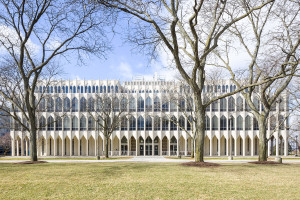College of Education
March 23, 2016
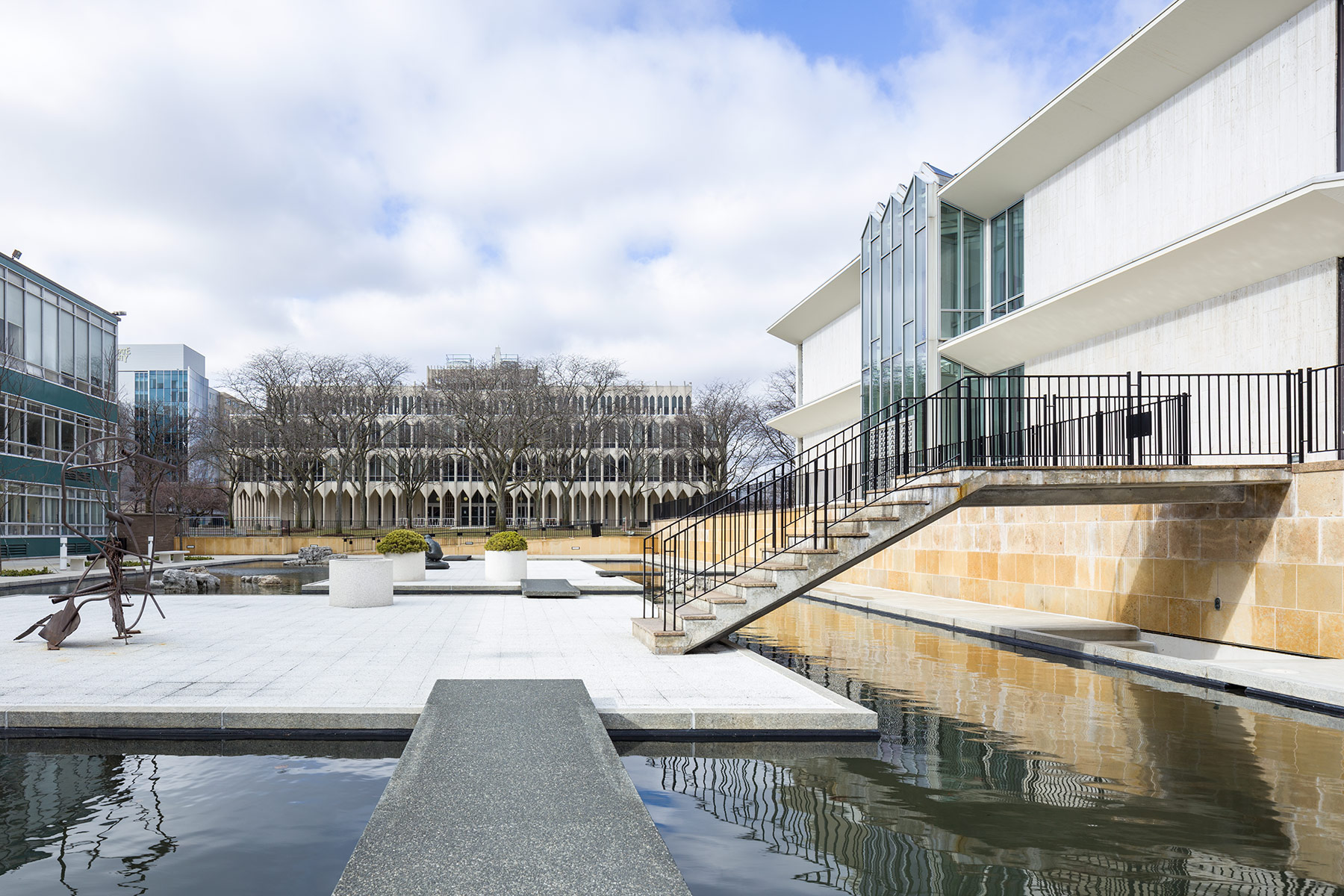
College of Education building, seen from McGregor Memorial Conference Center at Wayne State University in Detroit, Michigan by architect Minoru Yamasaki. Photo by Jason R. Woods.
It is no secret that Detroit public schools are in need of improvement. We’ve seen images of mushrooms growing in damp corners of classrooms, gymnasium floors look like a scene from Tremors, and broken furnaces forcing children and teachers to wear winter coats inside. However, when it comes to institutions of higher education, Wayne State University shines as a beacon of hope for many locals.
A master campus plan was developed by Minoru Yamasaki in 1957 that included a total of four building designs of his own, in addition to contributions from other local architects. The first of his buildings at Wayne State manifested as the widely acclaimed McGregor Memorial Conference Center, which earned AIA’s First Honor Award. The second building completed was the College of Education building to the west of McGregor Memorial. It embodies Yamasaki’s belief in what we now call New Formalism; the repeated use of the pointed arch, the clear symmetry across all four elevations, all while using the latest in construction technology. Much like his Prentis Building across campus, the ground floor is set back from the floors above to create contrast for the viewer, however casual or critical.
Yamasaki’s master plan at Wayne State created a campus that acts like its own city within the city of Detroit; a nearly self-sustained entity where students can live and learn without interference from hectic motorized avenues. In addition to this clarity of space, one is greeted with “surprises” when walking throughout the campus. Yamasaki was infatuated with this idea throughout the latter part of his career, and it shows itself at Wayne State as you walk north along Gullen Mall, the central artery of campus. As you walk along Gullen, look out into the distance and you’ll see Detroit’s largest piece of art, aka the Fisher Building, perfectly aligned with the path you’re walking on. That main street of campus happens to be where 2nd Avenue used to be, and it serves a logical and an aesthetic purpose simultaneously. The spatial relationships between DeRoy Auditorium and Prentis Building, and the College of Education building with McGregor Memorial are all signs that Yamasaki thought about the bigger picture when working on his projects. It is the intangible moments when experiencing architecture that are often times the most impactful and important. Although Minoru Yamasaki built the twin towers of the World Trade Center and were the tallest buildings in the world when they were completed, his real legacy lies in the humanist features that he employed throughout his designs from the early 1960s on.
A modest, yet smartly designed campus situated in the heart of Detroit serves as a metaphor of the city’s place in the narrative of America over the last 50 years. As a pillar of modern civilization, an institution of higher education stands proudly to remind us to hustle harder; or perhaps hustle smarter.
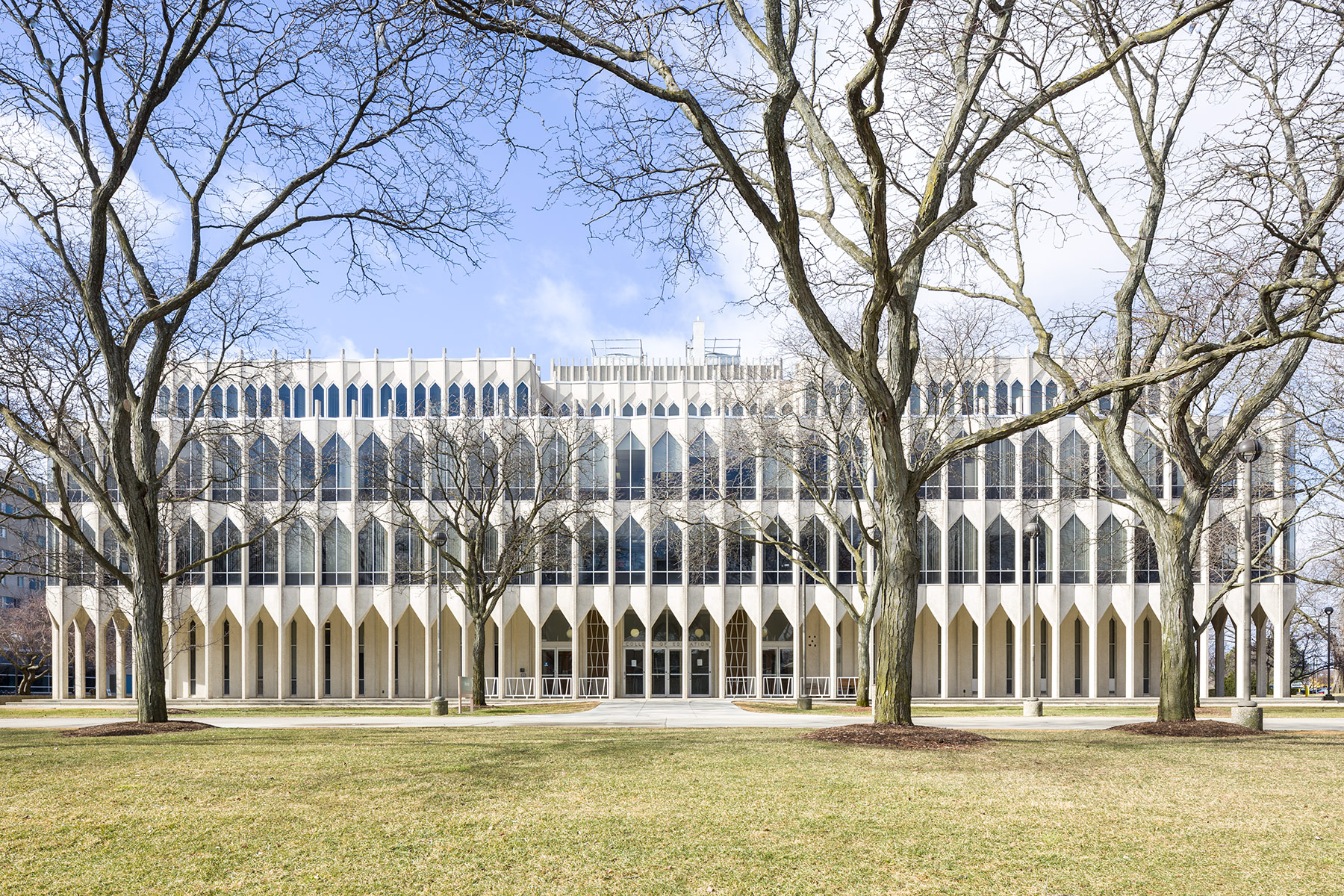
College of Education building at Wayne State University in Detroit, Michigan by architect Minoru Yamasaki. Photo by Jason R. Woods.
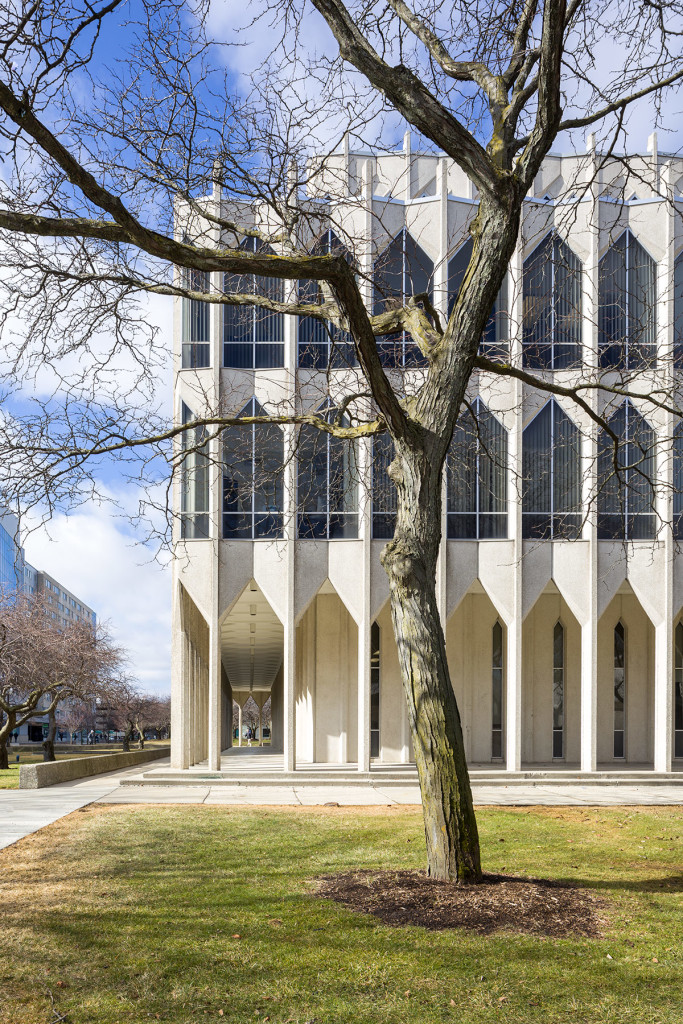
College of Education building at Wayne State University in Detroit, Michigan by architect Minoru Yamasaki. Photo by Jason R. Woods.
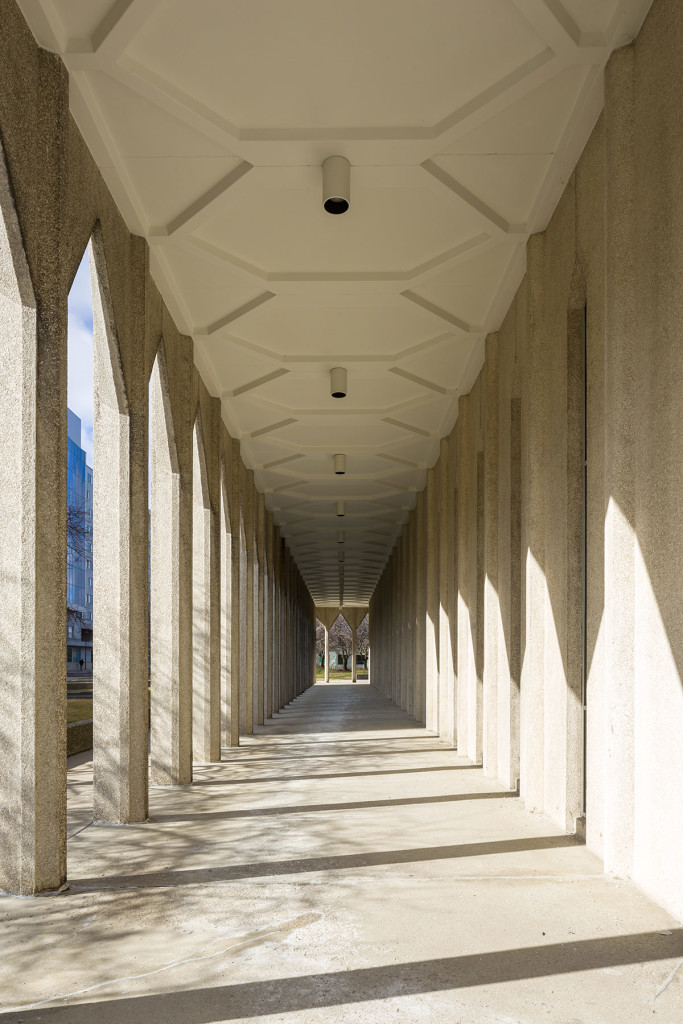
College of Education building at Wayne State University in Detroit, Michigan by architect Minoru Yamasaki. Photo by Jason R. Woods.
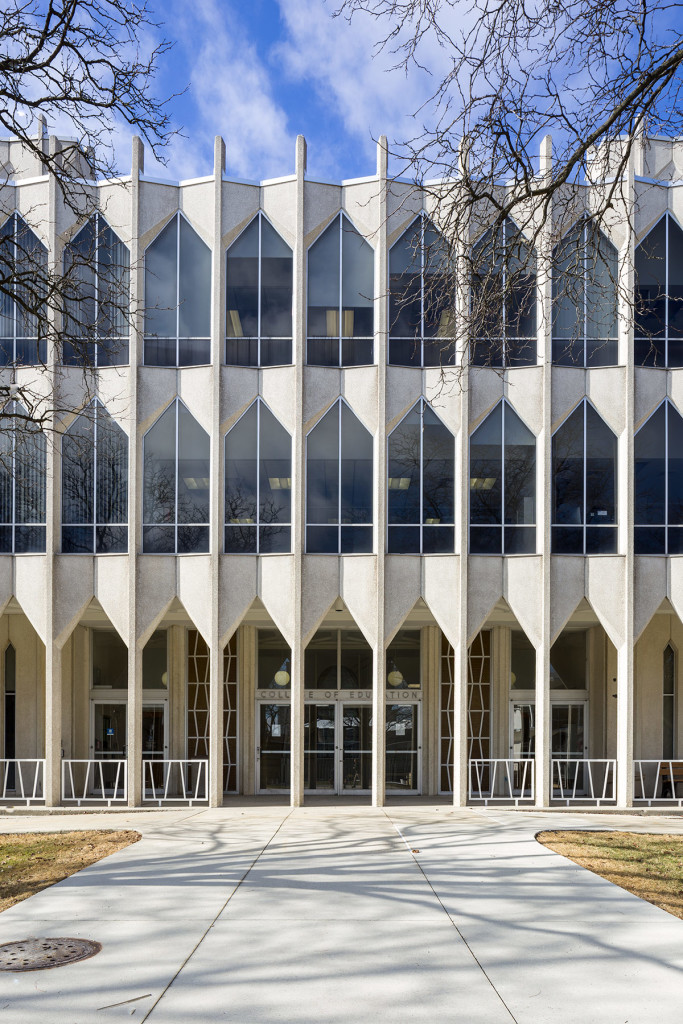
College of Education building at Wayne State University in Detroit, Michigan by architect Minoru Yamasaki. Photo by Jason R. Woods.
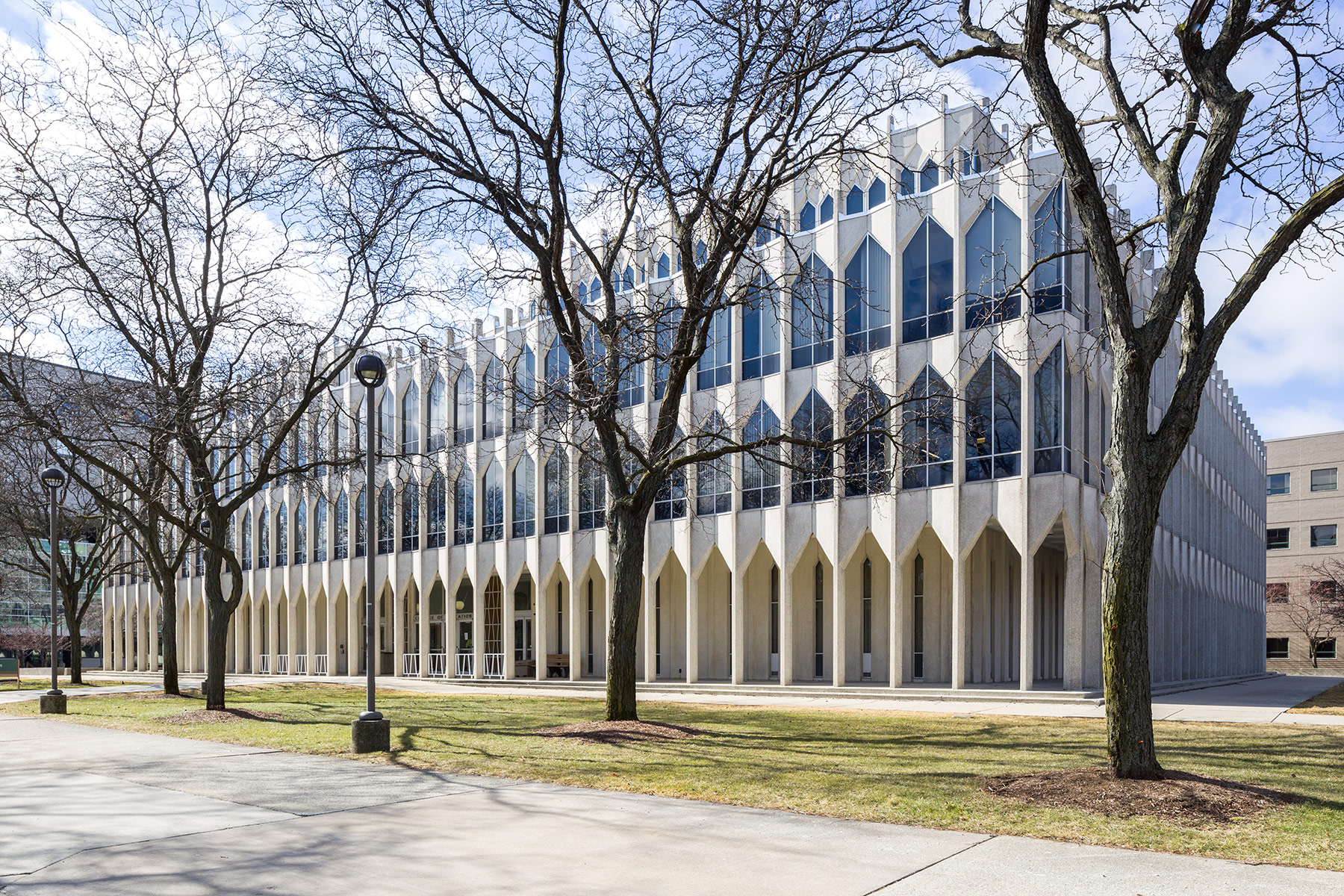
College of Education building at Wayne State University in Detroit, Michigan by architect Minoru Yamasaki. Photo by Jason R. Woods.
